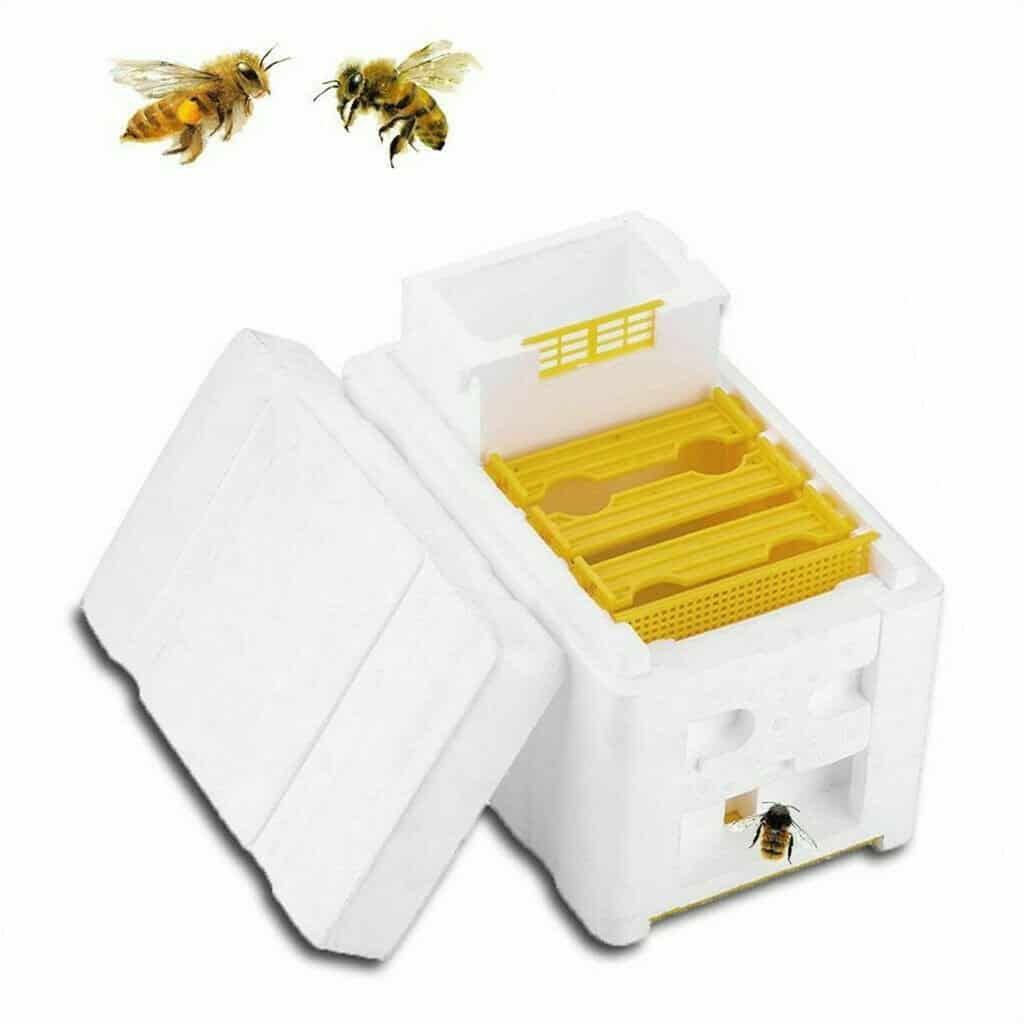Bee mating is an incredibly important process for beekeepers to understand. By understanding the mating behavior of bees and the reproductive cycle of bees, beekeepers can better care for their colonies and ensure that their bees remain healthy and productive. This article will provide a comprehensive overview of bee mating, including the different types of mating, the reproductive cycle of bees, and tips for successful bee mating.
Bee Mating Overview
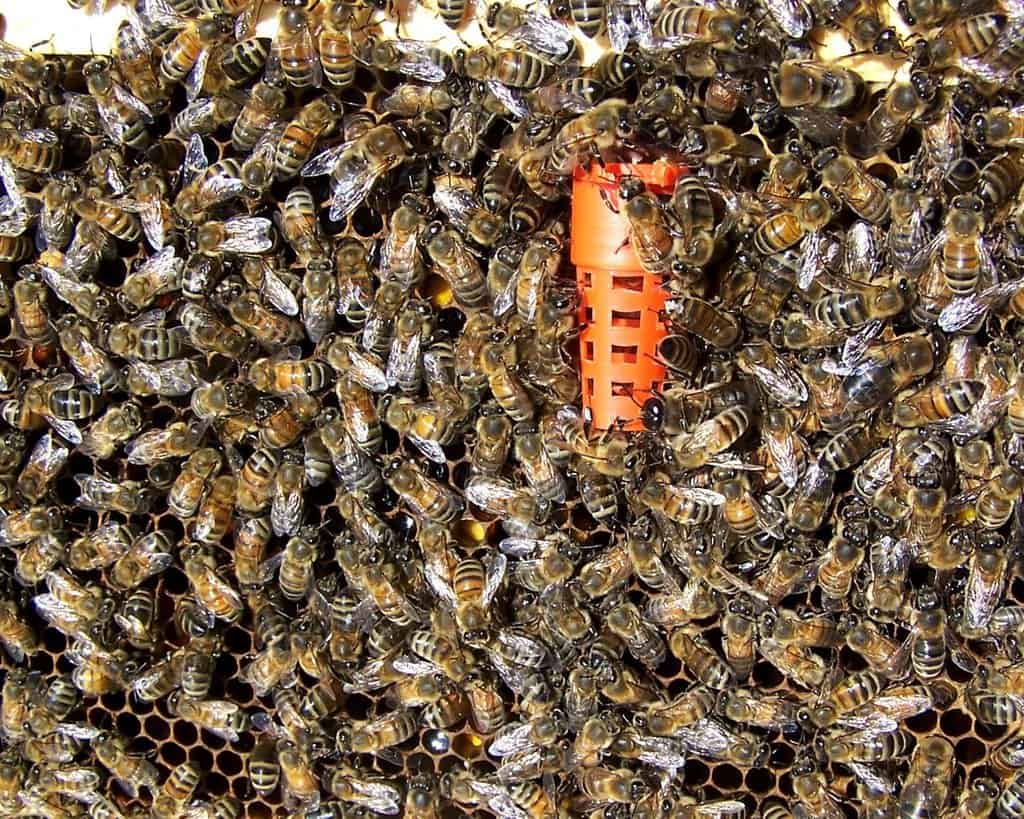
Bee mating is a complex process that involves several stages. The purpose of bee mating is for the queen bee to successfully reproduce and create a new colony. Typically, a healthy queen bee will mate with a number of drone bees over several days during the spring or summer months.
When the queen bee is ready to mate, she will leave the hive and fly out in search of a drone bee. The drone bee will then pursue the queen bee and attempt to mate with her. If successful, the drone bee will transfer his sperm to the queen bee, which will be stored in her spermatheca. After mating, the drone bee will die.
The queen bee will then return to the hive, where she will lay eggs using the sperm she collected from the drone bee. This process will continue until the queen bee has completed her mating mission. The queen bee can lay up to 1500 eggs per day, and she will continue to mate with multiple drone bees throughout her life.
In summary, bee mating is a complex process that involves the queen bee leaving the hive and mating with multiple drone bees. The sperm she collects from the drone bees will be stored in her spermatheca and used to lay eggs back in the hive. Ultimately, this process will ensure the survival of the colony and the species.
How do bees mate with the queen? When the queen is ready to mate, she will leave the hive and fly out in search of a drone bee. The drone bee will then pursue the queen bee and attempt to mate with her. If successful, the drone bee will transfer his sperm to the queen bee, which will be stored in her spermatheca. After mating, the drone bee will die.
What is Bee Mating?
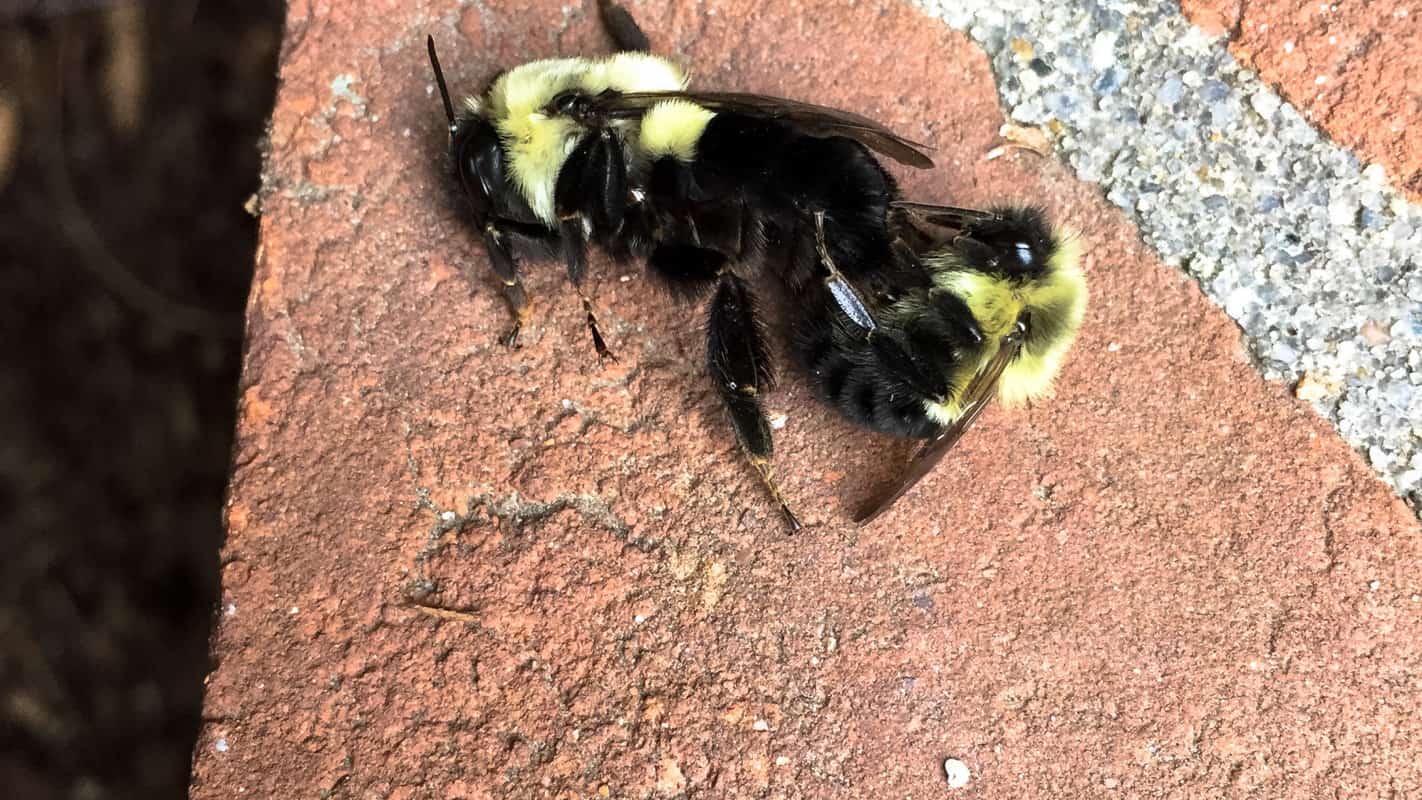
Bee mating is the process of how a queen bee finds and mates with a few drones in order to reproduce and create more bees. During this process, the queen bee must leave the hive and fly out to a drone assembly area where many drones await. Here, the queen will mate with several drones, gathering their sperm to fertilize her eggs for the rest of her life.
Fascinating Facts About Bee Mating:
- When a queen bee mates, she can store the sperm from up to 15 drones in her spermatheca, which is located in her abdomen.
- A queen bee will only mate once in her lifetime, during her mating flight.
- The mating process begins when the queen bee flies out of her hive and is followed by a swarm of drones.
- Once the queen bee finds a suitable drone, she will grab him in mid-air and mate with him.
- The queen bee can fly up to 6 miles away in order to find drones to mate with.
- The drones die after mating with the queen bee.
- The sperm from the drones is stored in the queen bee’s spermatheca and used to fertilize eggs throughout her lifetime.
How Does a Queen Bee Mate?
Once the queen bee has left her hive, she will fly to a drone assembly area, which is an area where many drones gather. Here, the queen will mate with multiple drones, gathering their sperm in her spermatheca. The mating process begins when the queen bee grabs a drone in mid-air, and the drone then transfers his sperm to the queen bee. The queen bee will then move on to the next drone and repeat the process until she has mated with enough drones. Once the queen bee is done mating, she will return to her hive and start laying eggs.
When Do Bees Mate?
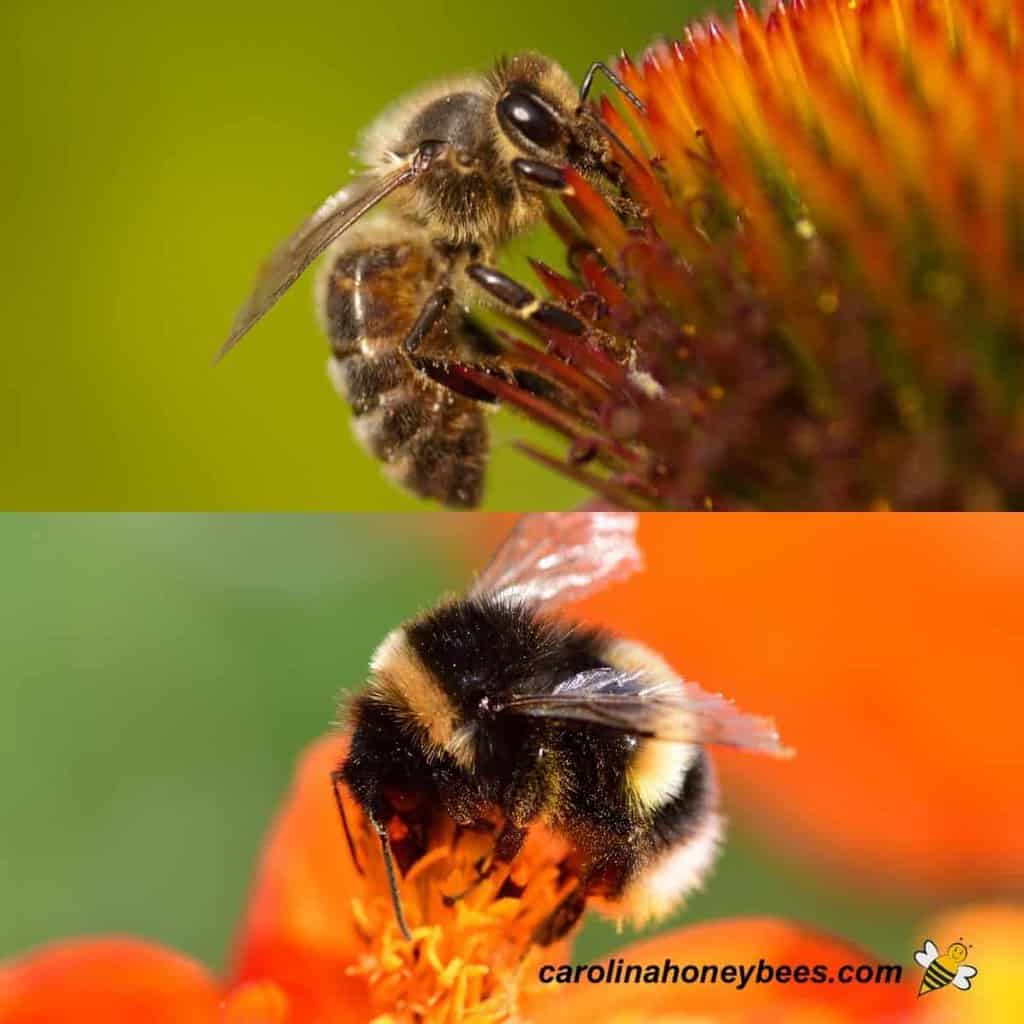
Bees mate in a very specific way. The queen bee will fly out with a group of drones, which are male bees. They will fly to a drone congregation area and the queen will mate with multiple drones. The drones die after mating, while the queen stores the sperm in her body to use for the rest of her life.
Queen bees typically mate only once in their lifetime and this is known as the “nuptial flight”. This is usually done in the springtime and generally happens when the queen is between 1 and 3 years of age.
- The drones will fly to a drone congregation area, usually at a height of about 30-50 metres.
- The queen bee will select the drones she will mate with and the mating will happen in mid-air.
- The queen bee can mate with up to 15 drones in one flight.
- The queen bee will store the sperm from all the drones she mates with and will use it to fertilise the eggs she lays throughout her life.
- The drones die shortly after mating.
Understanding when and how bees mate is important for beekeepers as it helps them to understand the reproductive cycle of their hive and how to best manage it. It is also important for beekeepers to understand the mating process of queen bees, as this helps them to ensure that their hives are well-maintained and producing healthy, strong offspring.
How Do Bees Mate?
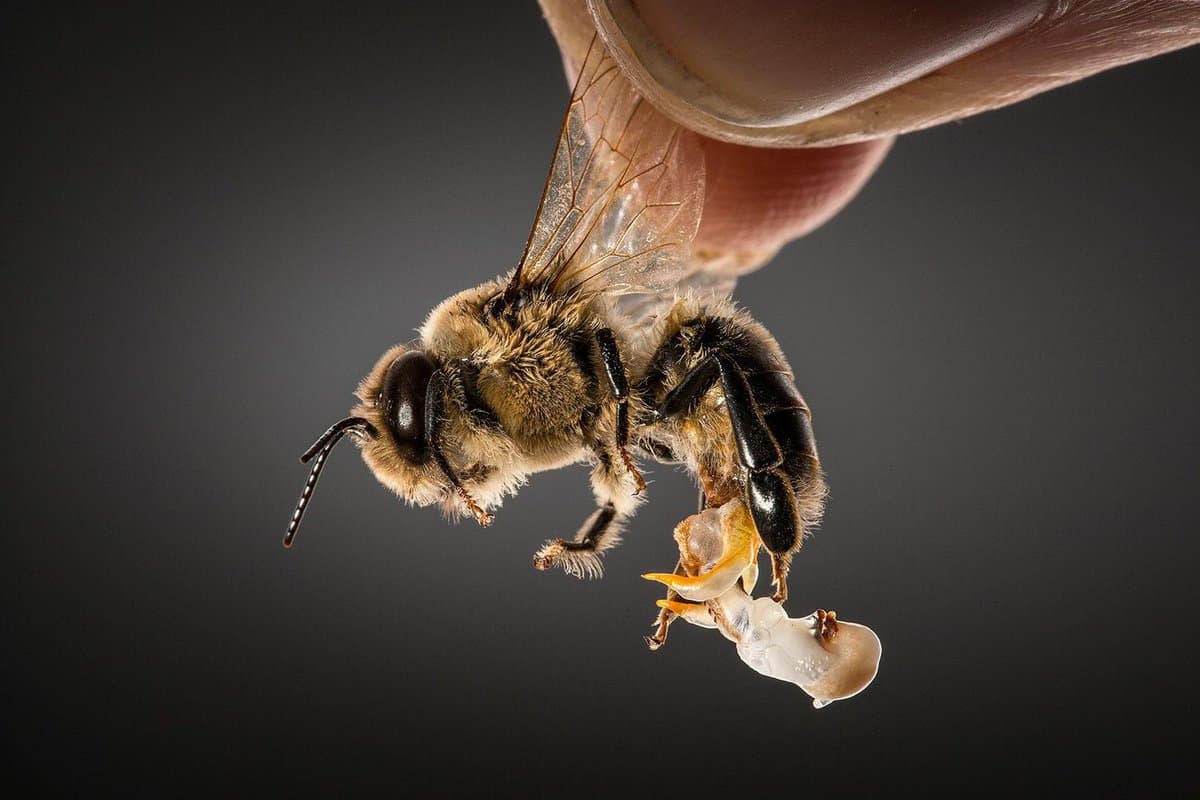
- Queen bee mating: Queen bees mate with multiple drones during a mating flight, usually 7–10 drones. The queen bee mates only once in her lifetime and stores the collected sperm in her spermatheca.
- Drone bee mating: Drone bees mate with the queen bee in the air and die after mating. This process is called the “mating death”.
- Number of times a queen bee mates: A queen bee typically mates with 7-10 drones during a single mating flight and stores their sperm in her spermatheca. She may take multiple mating flights, but the queen bee typically mates only once in her lifetime.
The process of bee mating begins with virgin queen bees and drones. The queen bee leaves the hive in a mating flight and searches for drones which she will mate with. During the mating flight, the queen bee and the drones fly in circles until the drones mate with the queen bee. During the mating, the drones transfer sperm from their testes to the queen bee’s spermatheca. Once the mating is complete, the drones die.
The queen bee returns to the hive with viable sperm stored in her spermatheca. This sperm will be used to fertilize the queen bee’s eggs during egg-laying. The sperm will also be used to fertilize eggs to create new worker and drone bees. The queen bee can store sperm for up to five years, so she will not need to mate again during that time.
When the queen bee’s sperm supply begins to decline, she will leave the hive in search of more drones to mate with. This process is known as a “remating flight” and is typically done when the queen bee is 3-5 years old.
Bee mating is a complex and fascinating process. The queen bee and drones have evolved to mate in a way that ensures the survival of the colony. By understanding the mating process, beekeepers can ensure that their hives remain healthy and productive.
Honey Bee Mating
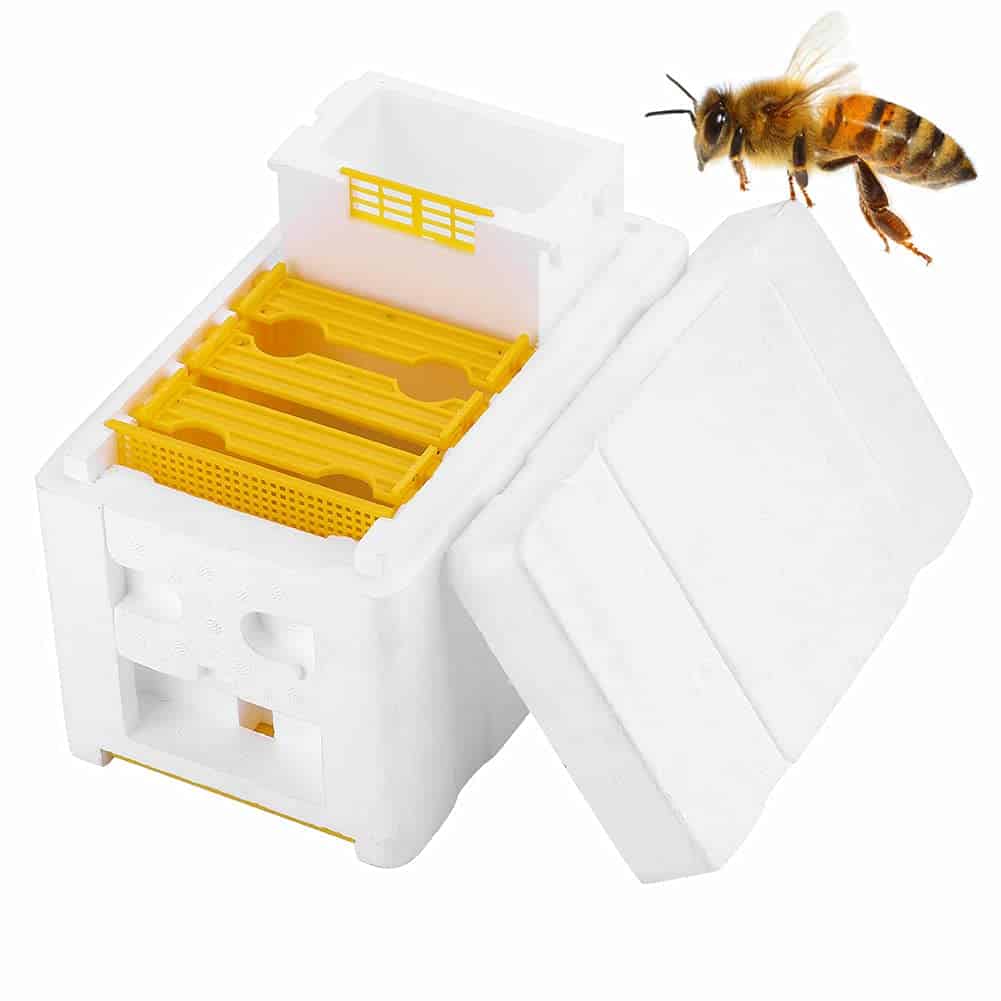
Mating is essential for honey bee reproduction. Queens mate with multiple drones, usually in the air. During mating, the queen and drones form a mating ball. In this ball, the queen and drones will mate, with the drones dying after mating. The queen stores the sperm from these drones in her spermatheca, and will use it to fertilize her eggs throughout her life. How often do queen bees mate? The mating process occurs only once in queen bees’ lives, usually lasting between 5 and 30 minutes.
The sperm from the drones will be stored in the queen’s spermatheca, and she is able to regulate which sperm is used to fertilize her eggs. This ensures genetic variability in her offspring, which is important for the health of the colony.
| Bee | Number of Mates | Mating Duration |
|---|---|---|
| Queen | Multiple | 5-30 mins |
| Drone | 1 | Depends on drone |
The number of mates and duration of mating for drones vary greatly, depending on the availability of drones and the size of the drone congregation area. Drones typically mate with multiple queens in a single mating flight. After mating, the drone dies shortly after.
How Do Honey Bees Mate?
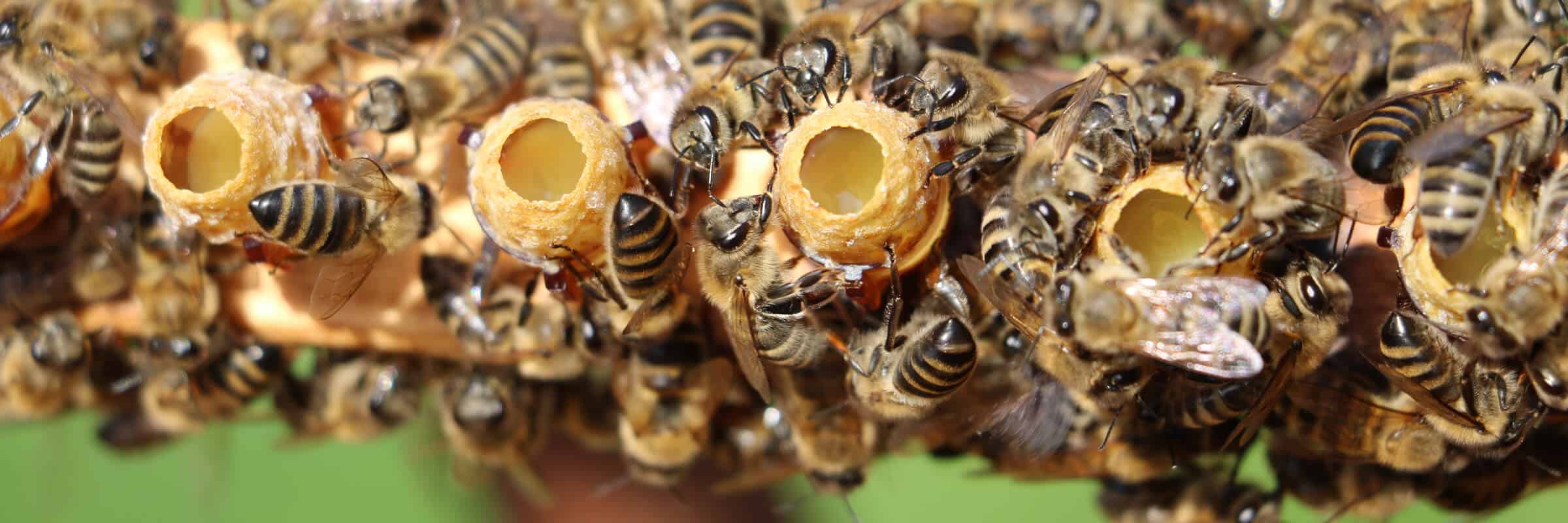
Honey bees reproduce through a process called the “mating flight”. Female bees (queens) fly out of their colonies and mate with male bees (drones) in mid-air. During the mating flight, the queen bee will mate with up to several dozen drones.
- Sperm Collection:
The queen bee will collect sperm from the drones during the mating flight. The sperm is then stored in the queen’s spermatheca, which is a special organ that stores the sperm for future use. - Fertilization:
The queen bee can control which sperm are used to fertilize her eggs. When she lays eggs, she will choose the sperm that she wants to use to fertilize the eggs. This ensures that the resulting offspring are of the highest quality. - Re-mating:
The queen bee will also re-mate with drones after the initial mating flight. This ensures that her offspring are genetically diverse and that any potential problems with inbreeding are avoided.
The mating flight is a complex and fascinating process, and it is essential for beekeepers to understand the basics of bee mating in order to ensure the health and productivity of their hives.
How Often Do Honey Bees Mate?
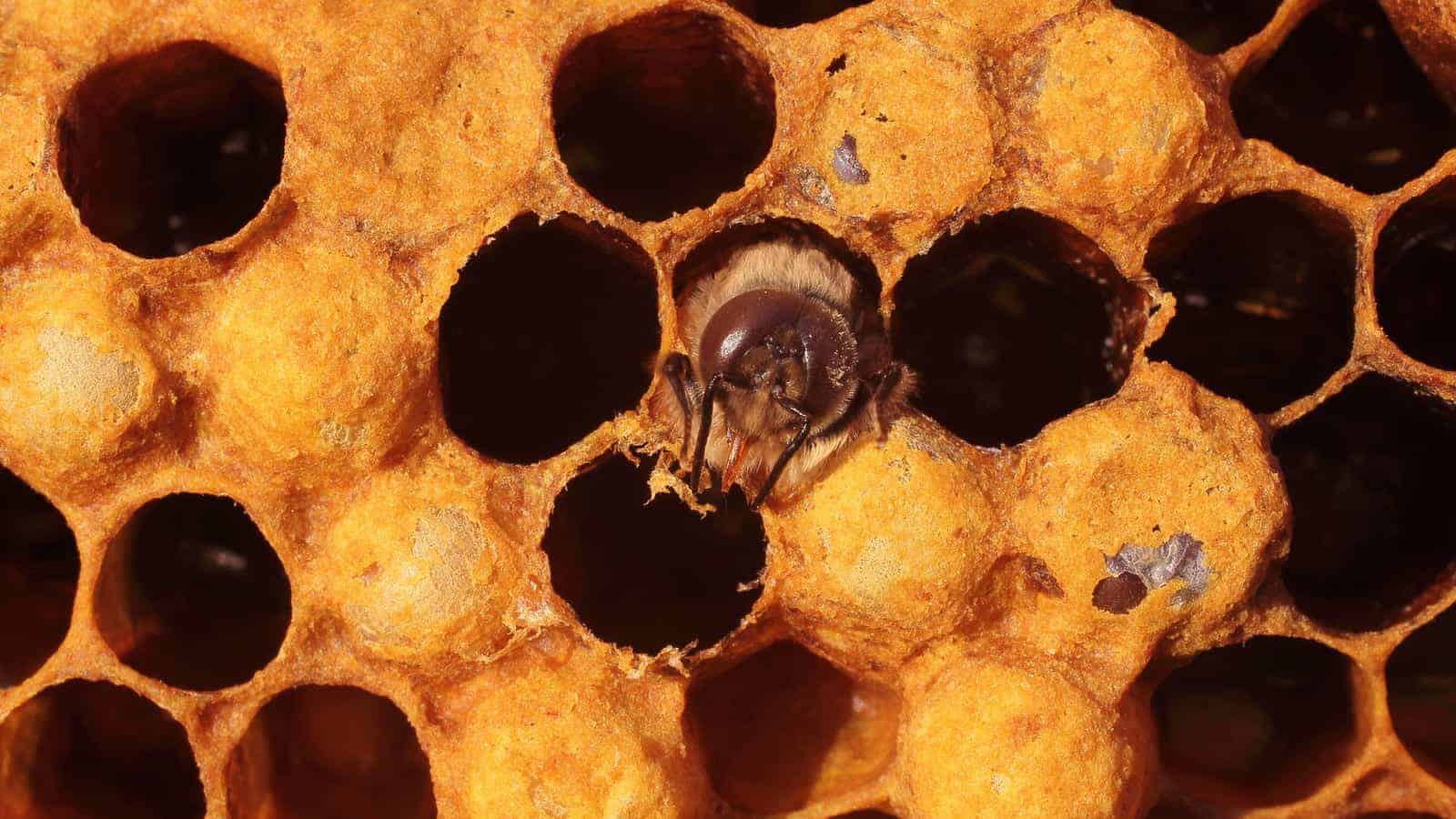
Honey bees typically mate during their first two weeks of life. On average, a bee will mate with 10 to 20 drones in their lifetime, but up to 50 drones have been recorded in some cases.
- Mating season for honey bees is typically in the spring and summer months when drones and queens are most active.
- When a queen bee emerges from hibernation, she will fly up to several miles to mate with numerous drones.
- A drone will die immediately after mating with the queen.
- Honey bees will mate in mid-air as the queen flies away and the drone follows her.
- The queen will store the sperm from the drones in her spermatheca, which acts as a reservoir for fertilization.
- The queen will use the sperm to fertilize eggs throughout her life and produce more worker bees.
The mating process is incredibly important for the survival of the species and is essential for the health of honey bee colonies. It is important for beekeepers to understand the mating process in order to properly care for their hives and ensure the long-term health of the colony.
Queen Honey Bee Mating
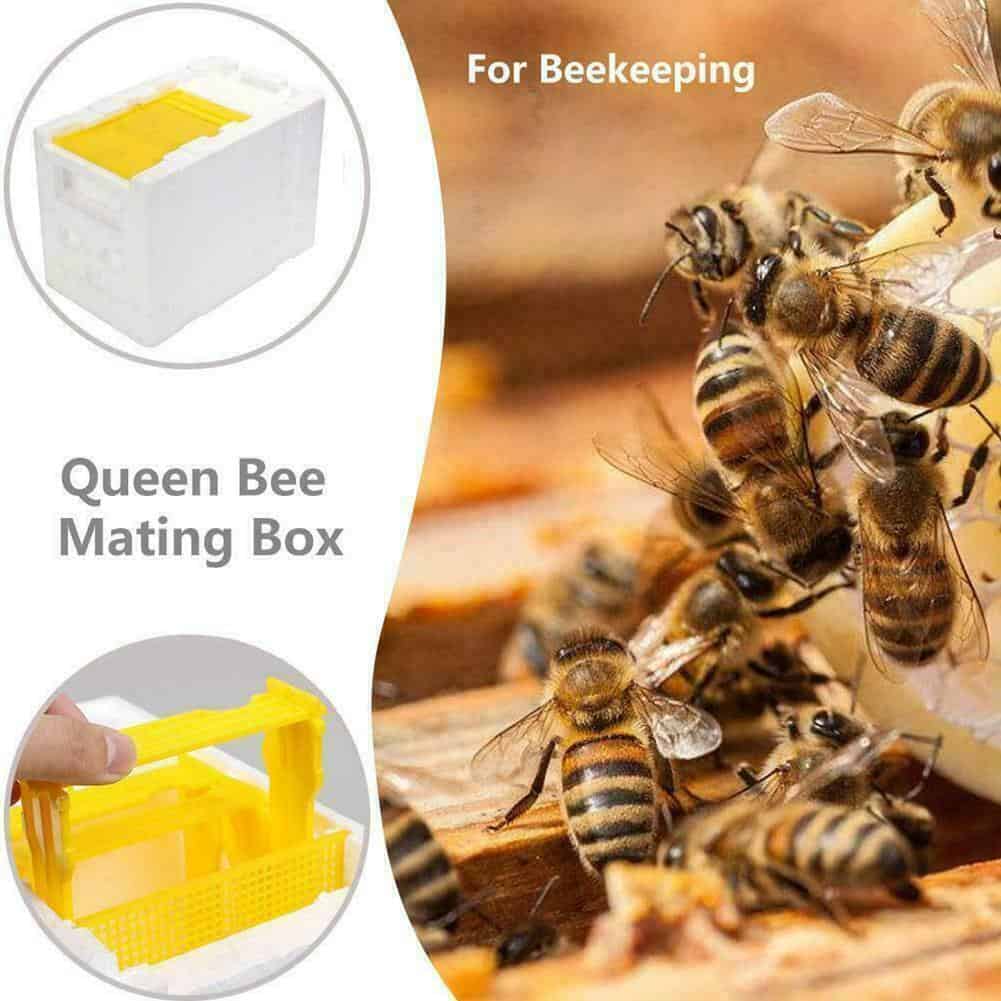
- When do bees mate? Bees mate primarily in the spring and summer.
- How do bees mate with the queen? Male bees, known as drones, mate with the queen in mid-air. The queen is able to store the sperm from the drones in her spermatheca, which allows her to lay eggs for up to five years.
- How does a queen bee mate? The queen bee will mate with several drones during a nuptial flight. During this flight the drones will compete to mate with the queen. The drones that mate with the queen will die shortly after the mating.
- How do queen bees mate? Queen bees mate in a process known as the nuptial flight. During the nuptial flight, the queen bee will fly high into the air and will be followed by several drones. The drones will compete with each other to mate with the queen. The drones that mate with the queen will die shortly after the mating.
- How many times does a queen bee mate? A queen bee can mate up to 10 times with drones during the nuptial flight.
- How often do queen bees mate? Queen bees will usually mate once per year in the spring or summer.
How Does a Queen Bee Mate?
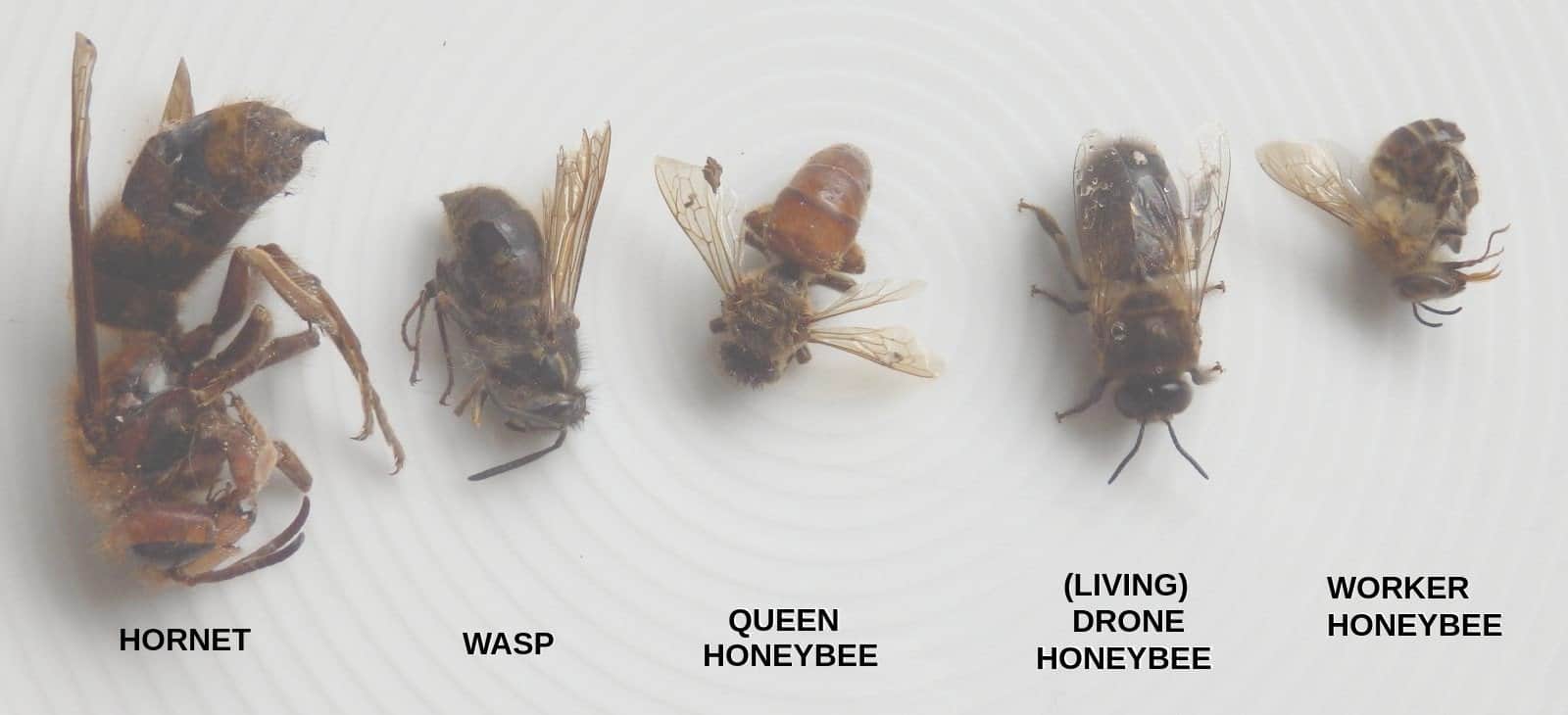
Queen bee mating is an essential part of the bee life cycle and is essential for the health of the hive. Queen bees mate with drones, or male bees, in a process known as nuptial flight. The process usually occurs in the spring or early summer, although it can happen as late as August. Here’s what beekeepers need to know about queen bee mating:
- When do bees mate? Queen bees typically mate in the spring or early summer, although it can happen as late as August.
- How do bees mate? Queen bees mate with drones, or male bees, in a process known as nuptial flight. During nuptial flight, the queen bee will leave the hive and fly high into the air, where she is met by a group of drones. The drones will compete for the chance to mate with the queen, and the successful drone will fertilize the queen’s eggs.
- How many times does a queen bee mate? Queen bees typically mate with 10 to 20 drones during one nuptial flight. The queen stores the sperm from the drones in her body and will use it to fertilize her eggs for the next two to three years.
- How often do queen bees mate? Queen bees mate only once in their lifetime. After the initial mating, the queen will not mate again.
Queen bee mating is an important part of the bee life cycle and is essential for the health of the hive. Understanding the process of queen bee mating, and the timeline of when it occurs, is key for beekeepers who want to ensure the health of their hives.
How Do Queen Bees Mate?
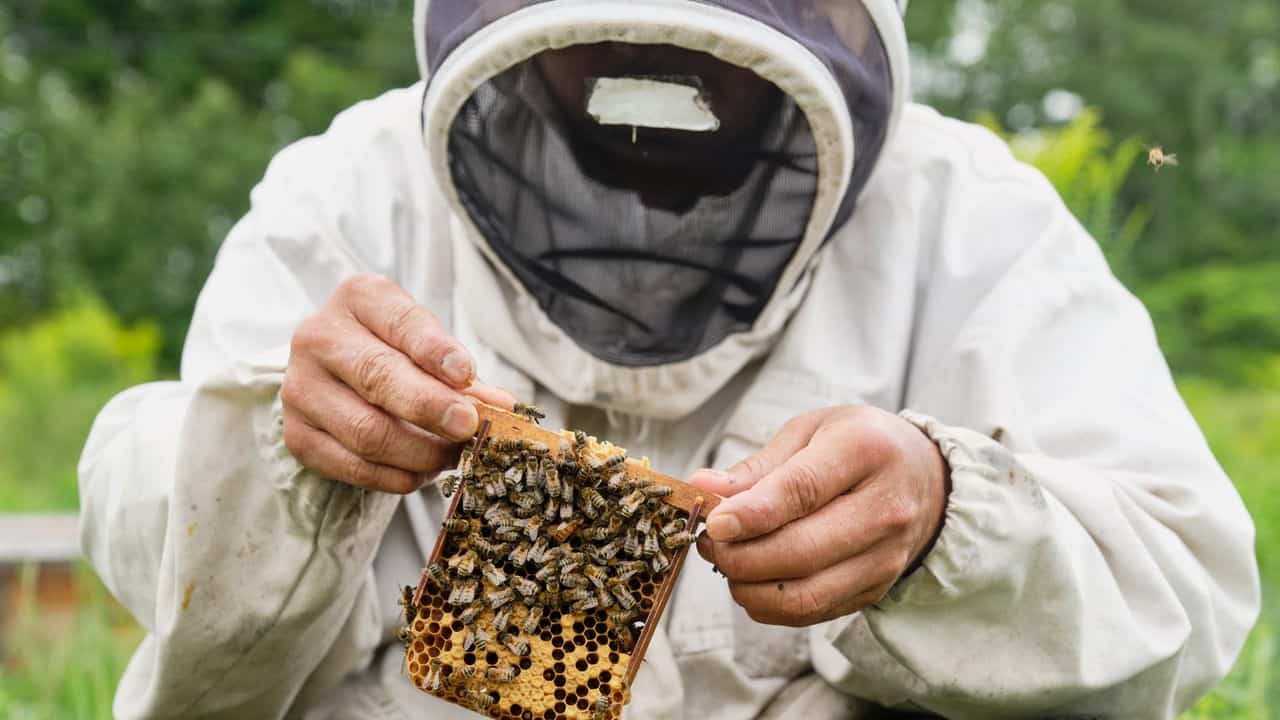
Queen bees mate in mid-air with several drones, which are male bees. Before mating, the queen bee will fly up to a drone congregation area, often located several hundred feet in the air. The drones will swarm around her and attempt to mate. The queen bee can mate with up to 15 drones in one flight.
During mating, the drone inserts its endophallus, a sac containing sperm, into the queen bee. The sperm is then stored in her spermatheca, a special organ that stores it for up to five years. After mating, the drone dies, and the queen bee returns to the hive, never to mate again.
Queen bees can mate up to three times in their lifetime, usually early in life, and the sperm is stored for later fertilization. This enables the queen to lay eggs in subsequent years, even if she is unable to mate again. The number of times a queen bee mates can vary, depending on the species, but it is typically two or three times.
| When do bees mate? | Early in life |
|---|---|
| How do bees mate with the queen? | Drones swarm around her and attempt to mate |
| How does a queen bee mate? | The drone inserts its endophallus into the queen bee |
| How many times does a queen bee mate? | Up to 15 drones in one flight, typically two or three times in her lifetime |
| How often do queen bees mate? | Once in her lifetime |
How Many Times Does a Queen Bee Mate?
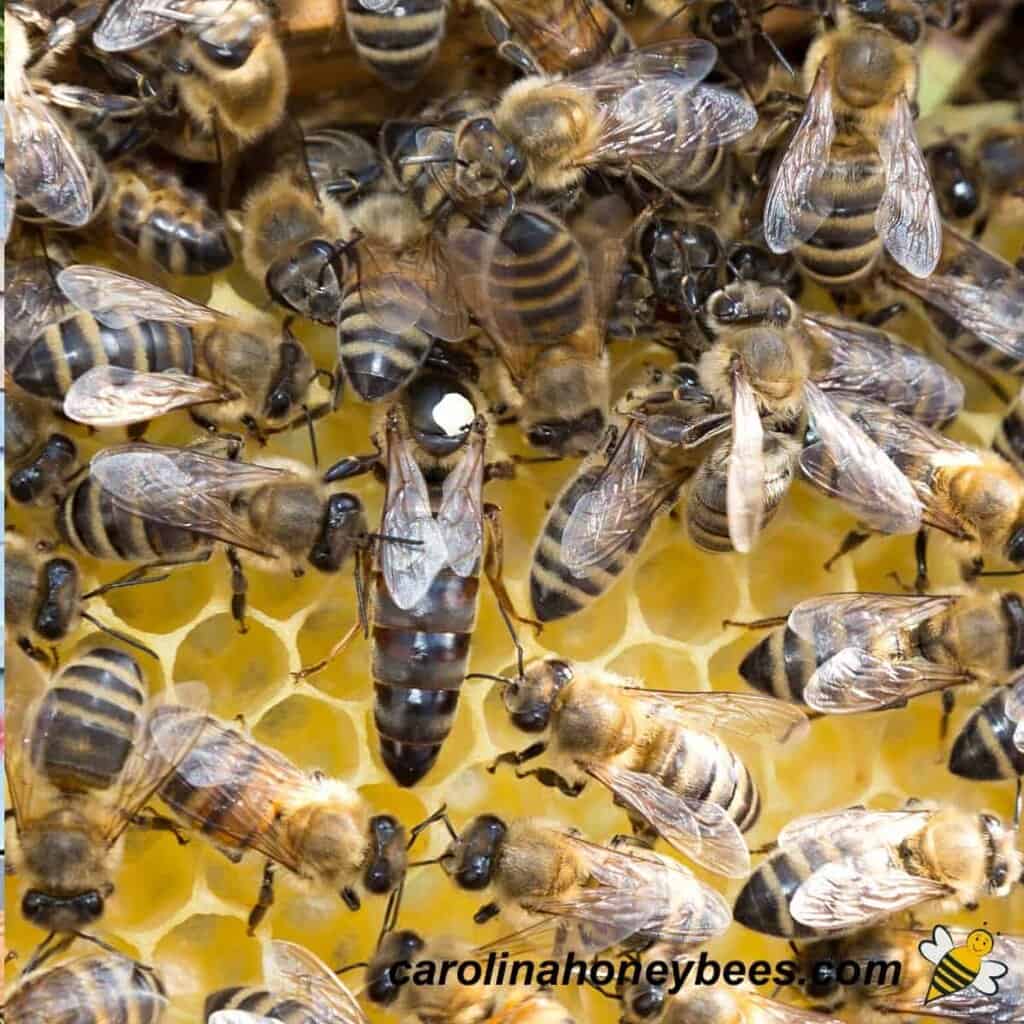
Queen Bees typically mate once in their lifetime, typically during the spring. The mating process is complex and involves the queen bee flying high into the air and being joined by several male drones. During the mating, the queen bee will collect sperm from several drones in her spermatheca, which she then uses to lay eggs for her lifetime. After mating, the queen bee will return to the hive and continue to lay eggs for the remainder of her life. Depending on the species of bee, the lifespan of a queen bee can range from a few weeks to several years.
When a queen bee dies, the hive will usually produce a new queen bee by allowing some of the worker bees to lay eggs. The new queen bee will then typically mate within a few weeks of emerging from her cocoon.
The process of bee mating is an important part of beekeeping, as it is essential for the health and productivity of a hive. It is also important to ensure that the queen bee is healthy and has a good chance of surviving her mating flight. When beekeepers are managing their hives, they should pay close attention to the queen bee to make sure she is mated successfully and that she is in good health.
How Often Does a Queen Bee Mate?
Queen bees mate only once in their lifetime. This mating flight typically occurs in the spring and is the only time the queen will mate with drones. During this flight, the queen will mate with several drones, storing the sperm in her body, which she will use to lay eggs for the rest of her life. The queen’s reproductive cycle is largely determined by the availability of food, which dictates the number of eggs she will lay. As a result, queens may lay eggs for many years before their fertility begins to decline.
Queen bee mating behavior is a complex process. The queen will typically emerge from the hive and fly to a drone congregation area (DCA) where she will mate with the drones. During this process, the queen and drones exchange genetic material, ensuring genetic diversity in the hive. Once the queen has mated, she will return to the hive and begin laying eggs.
Queen bee fertility can vary depending on the queen’s age and health. Generally, a queen can lay viable eggs for up to three years, although this can vary. After three years, the queen’s fertility may start to decline, and she may need to be replaced with a new queen.
- When do bees mate? Bees mate in the spring, and the queen will usually mate only once.
- How do bees mate with the queen? The queen will fly to a drone congregation area and mate with several drones, exchanging genetic material.
- How does a queen bee mate? The queen will fly to a drone congregation area, mate with the drones and store their sperm in her body.
- How do queen bees mate? Queen bees mate by flying to a drone congregation area, where they exchange genetic material with several drones.
- How many times does a queen bee mate? A queen bee mates only once in her lifetime.
- How often do queen bees mate? Queen bees mate only once in their lifetime.
- How do bees mate? Bees mate by exchanging genetic material with several drones in a drone congregation area.
- How bees mate? Bees mate by exchanging genetic material with several drones in a drone congregation area.
- Honey bee mating occurs in the spring, with the queen mating only once in her lifetime.
- Bee mating consists of the exchange of genetic material between the queen and drones in a drone congregation area.
- Queen honey bee mating is a process in which the queen mates with several drones in a drone congregation area.
- Queen bee mating is a once in a lifetime event, during which the queen mates with several drones in a drone congregation area.
- How often does a queen bee mate? A queen bee mates only once in her lifetime.
- Honey bees mating occurs in the spring, when the queen mates with several drones in a drone congregation area.
Frequently Asked Questions
What is the Process of Bee Mating?
Bee mating is a complex process involving a dance of courtship between the male drone and female queen. During the mating process, the drone will leave the hive and follow the queen up into the air. There, the drone will attempt to fertilize the queen’s eggs. The drone will then die as a result of the mating process. The queen will then return to the hive with the sperm collected from the drone, where she will use it to lay her eggs. The queen can lay up to 2000 eggs during her lifetime, which will result in the production of a new generation of bees.
What are the differences in mating strategies between different bee species?
Honey Bee Mating Strategy: Honey bees use a “drone congregation area” (DCA). This is a special area that drones congregate to wait for a queen to fly by. When the queen arrives, the drones will follow her and mate with her.
Bumble Bee Mating Strategy: Bumble bees mate on the wing. A male bee will fly out in search of a female bee and once he finds her, he will follow her until she lands. Then, he will attempt to mate with her.
Solitary Bee Mating Strategy: Solitary bees do not form colonies, so the mating strategy is different. Male solitary bees will look for female solitary bees, and once they find them, they will mount them and mate.
Carpenter Bee Mating Strategy: Carpenter bees use a different mating strategy. Male carpenter bees will hover near female carpenter bees until the female stops and the male can mount her.
What is the Role of Beekeepers in Bee Mating?
Beekeepers play an important role in bee mating as they are responsible for maintaining healthy colonies and ensuring a steady supply of bees for mating. Beekeepers can help by providing a suitable environment for the mating process, such as providing appropriate foods, managing the population of the hive, and controlling the temperature and humidity. In addition, they can monitor the mating process and keep records of the mating activities to help ensure successful mating. Beekeepers can also provide supplemental nutrition and protection for the bees, which can help to increase bee mating success.
What are the Potential Risks Associated with Bee Mating?
- Inbreeding: Unplanned inbreeding can lead to a decrease in the genetic diversity of a bee population, which can cause problems for beekeepers in the future. If a bee population is not genetically diverse, it can be more susceptible to disease and pests.
- Interference from Predators: Bees can be disturbed or even killed by predators when they are mating, which can lead to a decrease in the bee population. Predators can also interfere with the mating process, which can lead to mating failure.
- Parasites: Parasites, such as mites, can be transferred from one bee to another during mating, which can have a negative impact on bee health. This can lead to decreased productivity, increased mortality, and decreased honey production.
- Weather Conditions: Unfavorable weather conditions, such as extreme heat, cold, or wet weather, can all interfere with bee mating and can lead to mating failure or decreased production.
What are the Benefits of Bee Mating for Beekeepers?
Bee mating plays an important role in beekeeping by producing healthy, diverse bee populations. By taking advantage of natural bee mating, beekeepers can benefit from improved honey production, healthier bee colonies, and an increased resistance to pests and diseases. Furthermore, bee mating can be used to reduce inbreeding and make sure the bee population remains diverse. As a result, bee mating can be used as an effective tool to produce strong and successful bee colonies.
Conclusion
Bee mating is essential for the health of bee colonies and beekeeping. The queen bee is the most important bee in the colony as she is the one responsible for reproduction and the production of more workers. Beekeepers must understand the mating behavior of bees in order to better manage their colonies. Understanding the mating process can help beekeepers better understand how to manage the colony and help it thrive.
